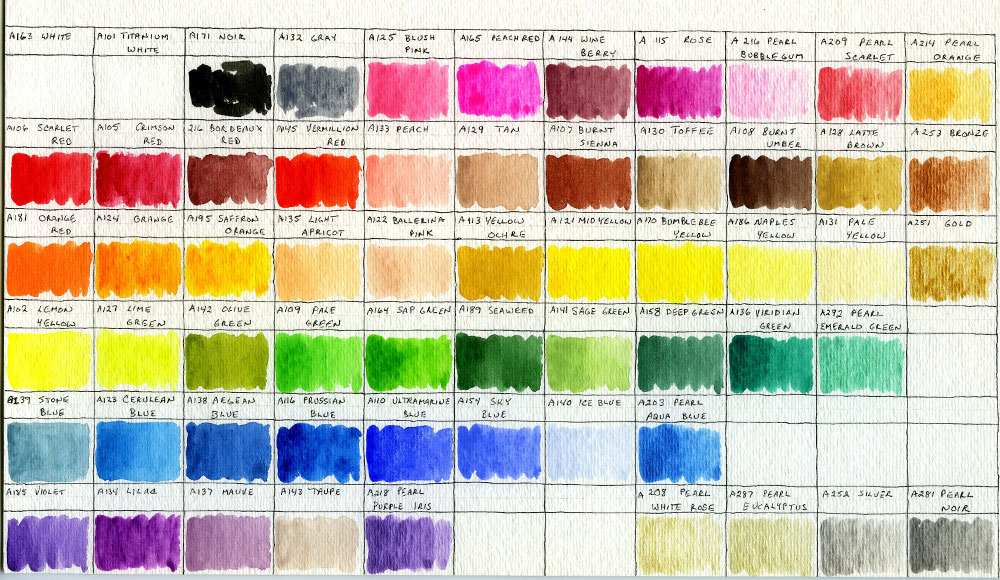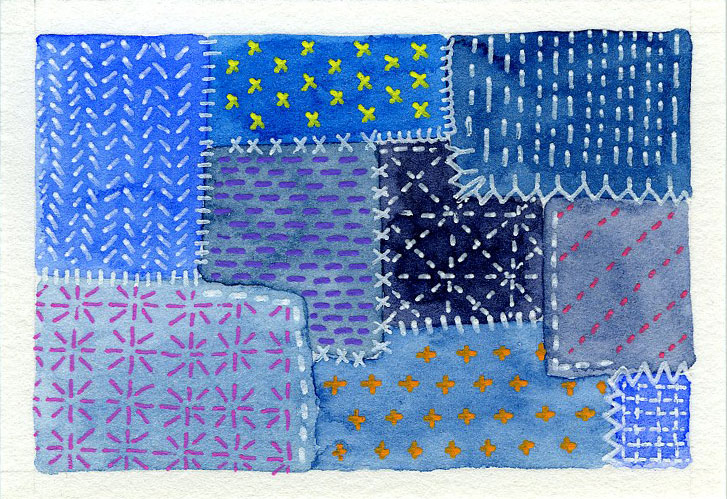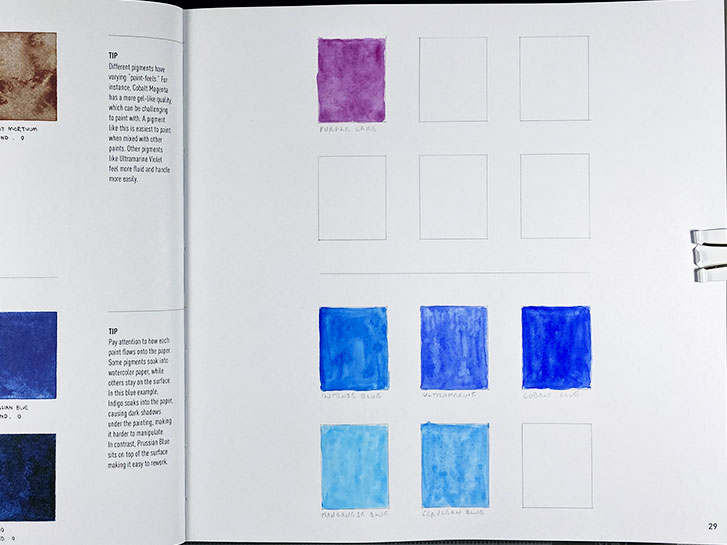Usually, when I am talking about masking, it is as it applies to art. For example, watercolor painting. You use a “masking fluid” to preserve the white of the paper to create highlights. When you are done, and your paint is dry, you remove the masking to reveal the white.
Because of the new corona virus, we are looking at masking in a different way. However, it’s purpose is to preserve. Preserve health and life.
Remember these? I loved the challenge of new patterns. But I only wore one or two a few times.
I am unpacking my sewing machine to make some masks, and I came across these in one of the bins. I thought the colors and patterns were bright and cheerful, so I thought I would share this picture with you.
Use your art to heal your spirit!
Today, I am creating content for my tiny accordion books. For the first one, I used journaling stencils and traced out designs that I thought were interesting and created patterns.
There is no particular message, or order, other than I went though the stack of the stencils, one-by-one and if I saw something I thought would be fun, added it to the page with pencil.
I may add more interesting designs directly with the paint, but I think I’m off to a good start here!
Now that I have my Arteza gouache paints all set up and ready to use, I’ve folded a few accordion books from 140 lb watercolor paper.
I don’t have any particular themes in mind yet, but I’m thinking for one, I want to use some journaling stencils that I have to create various random shapes throughout the book. I think that would be fun to paint, like using a coloring book!
This is my new, Arteza Gouache swatch board, based on the layout of the colors in my boxes. The top three rows are in the blue box, and the bottom 3 are the grey box. There are 60 colors, total.
When I did the original swatches, I used paint right from the tube. For this board, water was added to the dried paint and then painted in each rectangle. This is more of a watercolor style and I like the colors much better this way.
Yesterday, I showed you my planned palette set up for my Arteza gouache.
Here, you can see that I’ve added the paint to each well, in the pre-planned positions. I let it dry over night. It is really interesting to see how matte the colors are now that they have dried. Originally, they were very shiny and wet looking right out of the tube.
The paint was very creamy and easy to squeeze out of the tube. Even though I had previously opened these, there didn’t appear to be any problems with the paint being dried out. A few of the covers had a small amount of dried paint in the top, but it fell out onto my mat without any problems. And the covers went back on easily.
I have had a large set of Arteza Gouache for several months. When I first got it, I swatched out the colors but then I put them away to concentrate on another project.
Now that I have a lot of time on my hands, I decided to pull them out and set them up in the palette boxes.
I cut apart the little swatchs, and that allowed me to arrange them on top of the wells in the order that I want.
This is the big sister to a layout in my tiny art journal , which I showed you a few days ago.
While this has a different arrangement, it started with the same concept, circles and the same quotation. It also has the same paint colors. Both backgrounds were painted at the same time.
Just as with the tiny version, this began with text papers from a book, magazines and junk mail being attached to the page with Liquatex Matte Medium. When it dried, a layer of gesso mixed with a bit of water was brushed over the page to lower the contrast.
While we are in the PT (Pandemic Time), I am, like many others, having trouble concentrating on long-term projects. I am finding myself drawn to new and different things that I hadn’t previously considered. For example, I tried knitting an stuffie. It went well, until I got to the head. I want to knit the “hair” as I am knitting the head. I keep loosing my pattern count and I still don’t have a completed head, although I’ve started over many times.
This is the third exercise in the Watercolor Workshop book (by Shasha Prood).
Here we are swatching our blue and purple paints. I had several blues in my box, but only one purple, which I’m not thrilled with.
I am thinking that I will, eventually, purchase another couple of tubes of purple paint. But I’m happy with the variety of blue.
I am doing this with my friend Sandra Mitchell. Look for her results on Facebook!
This week, I challenged the members of the Micro Art Journaling group on Facebook to create a micro layout, micro page, or tiny artwork using circles as the theme. They were also given the quotation below.
This layout began with various pieces of paper, including some text, being glued down to the page with matte medium.
When that dried, I added a light, irregular coat of gesso that had been thinned with some water.
On the second day of working on the Watercolor Workshop, (by Shasha Prood), we’re making swatches of oranges and reds.
I have one true orange, Cadmium Orange, but I think these other two colors, Burnt Sienna and Cadmium Red Pale, fall into this category, also.
For reds, I have a primary color, Cadmium Red Deep, and another that is a cool red, Alizarin Crimson. Indian Red is a very earthy red and (again) Cadmium Red Pale is a very orangy red.
Another card, but this was actually cut from a greeting card.
I liked the red printed texture and I didn’t want to cover it completely. But I did want to add to what is there.
While not finished, by any means, the bit of stencilling added has given me an idea of where I might go from here. I will be working on this one some more.
#liquatexacrylics
Another junk mail card. Here, I’ve used leftover paint, swiping it across the card. Then I used the other end of the brush (the handle) to draw into the wet paint.
I saw a splotch of red-orange and decided to set the card aside to dry. Later, when I examined it closely, I realized it was person, that I think is either on a skate board, or roller skates.
This is another junk mail card. The base is, again, created by peeling paint off my palette and sticking it to the card using Liquatex Matte Medium.
When that dried, I used a few different Liquatex markers to add some interesting marks around the sides and edges.
Then I used fresh paint with stencils to add more interest.
Now I’ve set this one aside to think about. I may want to add more to it to create a firm focal point sometime in the future.
This is my first day of working on the “Watercolor Workshop” (by Shasha Prood) with my Facebook friend, Sandra Mitchell.
For the first exercise, we are painting swatches of green and yellow. We are just making a color reference and understanding what happens when each color is applied to the rectangle on the paper.
I started out with a “waterbrush”. You know the kind, it is sometimes referred to as a travel brush because you can fill the handle with water and take it with you. It turned out that it didn’t work very well. If you made a second pass over a wet area, the nylon bristles caused the paper to pill up.
A Facebook friend of mine posted a photo of a book she had that she was thinking about learning from. It turned out, I have that same book, and I’ve never gone through it!
Both of us are needing some extra motivation to get things done around the house. So we have decided to use this book as motivation.
Here’s how it works. We set some chore that we dread, but really need to get done. When it’s finished, our reward is we get to do one exercise from the book. We will be taking an “art break” in between our chores!
Yesterday I was determined to accomplish something, anything in the studio.
I’ve been wanting to experiment with peeling paint off my palette and using it in some manner. So I decided to try it on one of the junk mail cards. It peeled off in chunks and strips and I used Liquatex Matte Medium to glue it to the card.
I discovered that side that is against the palette is often very differently colored than the front, so you get some surprises. I also found that it is very slick and shiny. I like the texture the pieces created.
Another underpinning! Again, this is a text example, but this time, the text was added to a gessoed page using rubber stamps and various colors of Archival ink.
When the stamped images dried, I went over them with a heat gun, just to make sure they were set.
Then a light coat of gesso was applied. This knocks back anything that is too strong, and insures that the next layer will not cause the ink to bleed.
Today, I have another underpinning. This week I am experimenting with different ways to get text texture added to the backgrounds of pages.
Here, I’ve used various sheets of printed text, torn into pieces and glued to the page with matte medium. There are pieces from books, junk mail, calculation sheets, a print out, and even some hand written notes.
After the papers dried, I added a light coat of white gesso to knock back the contrast while allowing the texture to still peek through.



















